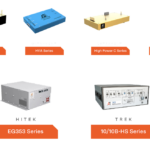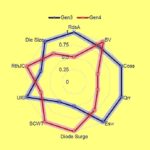Silicon Carbide FETs go beyond silicon to extend reach to high pulse currents in power conversion applications. Wide bandgap (WBG) semiconductor devices, such as Silicon Carbide (SiC) field-effect transistors (FETs), are renowned for their minimal static and dynamic losses. Beyond these attributes, this technology can endure high pulse currents, proving particularly advantageous in applications like […]
Power Electronics Handbook
Delivering power supply reliability in mission-critical systems
There are several factors to consider when selecting a power supply that delivers the high voltages often needed by large and complex high-performance systems. For almost all electronic products and systems, high reliability should be expected. Still, in some markets, reliability cannot be compromised or a trade-off for other performance factors. In particular, mission-critical industrial […]
Dispelling Myths: Don’t believe it when they say you need a bipolar gate drive for eGaN FETs
Use of a negative gate drive can lead to a larger voltage drop during deadtime and severe losses. Andrea Gorgerino, EPC GaN devices have gone from initial R&D to mainstream designs over the last 15 years. Unfortunately, there are many misunderstandings left-over from those early-stage developments or dead-end technology branches. One of the most pernicious […]
Improvements in stacked load architectures
Stacked-load schemes have made power conversion more economical in server racks. New developments in this technology promise to provide additional gains in efficiency. Laszlo Lipcsei, Alexandr Ikriannikov, Di Yao — Maxim Integrated, now part of Analog Devices Load currents continue to rise in server applications while rail voltages tend to drop. Consequently, the conduction losses […]
Selecting dc-link capacitors for inverters
One key factor: Determining the nuances of how capacitors handle expected ripple currents. Sam G. Parler, Jr., P.E. Cornell Dubilier Examine a dc link capacitor’s ac ripple current and you’ll realize it arises from two main contributors: the incoming current from the energy source and the current drawn by the inverter. Of course, capacitors cannot […]
Fundamentals of fast chargers for phones and notebook PCs
Overlapping protocols and competing standards have created a confusing landscape for USB chargers. Here are the important differences and similarities of most interest to designers. Masashi Nogawa, Staff Systems Engineer Qorvo The first standard for charging via USB connections allowed power delivery at a 7.5-W maximum. Recently the USB standard jumped up to support 100 […]
The advantages of generation-four SiC FETs
New silicon-carbide FETs perform better than previous versions and can replace silicon MOSFETs with relative ease. Anup Bhalla, VP Engineering UnitedSiC Wide-bandgap (WBG) semiconductors are now accepted as the future of high-efficiency power conversion. The reason: they provide lower conduction and switching losses than otherwise-comparable silicon-based IGBTs or MOSFETs. Since the introduction of WBG silicon […]
Handling the 48-to-12-V stepdown
A multiphase, interleaved buck converter can reduce bus voltage down to something useful in data center server racks. Brad Xiao, Nazzareno (Reno) Rossetti Maxim Integrated Hyperscale data centers that dissipate hundreds of megawatts demand efficient power delivery beyond the ability of the traditional 12-V power supplies on old server motherboards. A data center on 12 […]
The changing maze of power supply standards
Brexit altered the landscape of standards for power supply products. Here’s an update on the latest revisions. Ron Stull CUI Inc. The usual way of choosing a power supply is to search on the electrical performance parameters the application demands. But today, it is actually more efficient to start with the national or international standards […]
Super-efficient power converters help hovering drones take flight
When the task calls for a aerial system that can hover in place, the often-chosen approach is to employ a tethered drone. A tethered drone, generally a multirotor, gets its power and communications signals via a flexible wire or cable. Where battery powered multirotor drones can exhaust their batteries in 20 minutes or so, tethered […]











